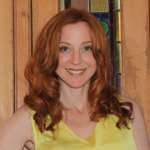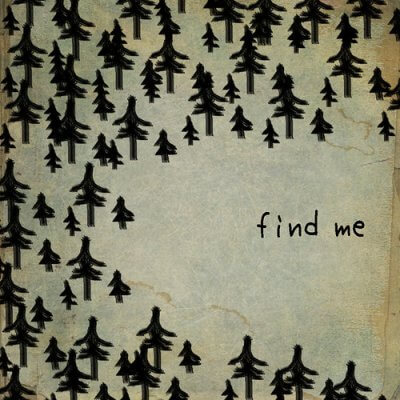Who Are You, Really? How to Discover Yourself

By: paurian
by Andrea M. Darcy
Do you often feel like ten people rolled in one? Or worry the real you is hidden in some place you’ll never find? Who are you, really?
How to Discover Yourself
If you are looking for a quick solution to your identity crisis, it’s important to take some things into consideration.
1.If you are a teenager, cut yourself some slack.
Your brain is actually still growing when you are a teen. And, according to models of healthy human development, you are supposed to be questioning your identity. Psychologist Erick Erickson, famed for his ‘Stages of Psychosocial Development’, called our teen years the “Identity vs Role Confusion” stage.
2 A totally solid, never changing identity is not the right goal.
The idea that you will figure out who you are and never change might seem like the answer to all your anxiety. But a healthy human is always learning. Values and personality traits remain the same. But sometimes we change our minds, expand our perspectives, and, hopefully, become better people.
3. Some of us are naturally more flexible with our identity than others.
Some people just seem born with a simpler personality then others. And some of us seem more fascinated with pushing our own boundaries.
This said, too much flexibility of identity causes problems with relating and connecting, often stems from unresolved childhood trauma, and is a sign of mental health issues and disorders such as borderline personality disorder.
How to discover yourself – key tools
Identity is an inside job, as you’ll discover with these therapist-recommended tools below. Your clothes, music tastes, and social circles might be a side product of your identity, but they can’t actually determine who you are.
1. Identify your personal values.
If there was ONE thing that is the key to identity, it would be personal values.These are the things that are so intrinsically important to us, we prioritise them without realising.
When we take the time to identify our own values and choose a life in line with them, we feel ourselves at last.
The trouble comes if we try instead to live out our parents‘ value system, or those of our peer group. We suddenly feel tired, confused, and lost.
A classic example here is the banker from a big family who packs it all in to work for a charity and suddenly finds happiness. But it could also be the reverse. If your family values charity above all else but deep down you value success, taking a job in banking might feel a relief.
2. Find the feel good.
One way to get closer to your real identity is to get honest about what actually brings you a satisfied, good feeling in life – your ‘wellbeing activities‘.
If you ‘think’ you are supposed to like shopping and travelling, because your friends do, and it looks good on social media? But deep down you feel happiest at home with a cup of tea reading about science and philosophy? What would it feel like to start doing that instead?
3. Meet people on purpose.
Sometimes we are struggling to be ourselves as we are under the illusion we have to stay best friends with the same people our entire lives. This is unrealistic. People change with age, and sometimes we need to ‘let go and grow’.
Simply letting ourselves be around different people who don’t have a ‘history book’ of all the things we have ever done can liberate us to realise who we now are. And it means we can choose new friends we share values with, around whom we can be ourselves more easily.
4. Dig out unhelpful core beliefs.

By: Alyssa L. Miller
Ever wondered if your real self was being controlled somehow?
Core beliefs are the assumptions we make growing up that we then mistake as fact. They hide out in our unconscious and tend to drive every decision we make.
For example, if something happened to you as a child you had no control over and that terrified you? You can have the core belief ‘the world is a dangerous place’ — even if you live in a safe, wealthy country and never witness violence. This fear-driven belief can stop you from interacting with the people and opportunities that could let your real self shine.
5. Learn balanced thinking.
Is your thinking very black and white? And you are always imaging the worse? These kinds of thinking are called ‘cognitive distortions’ in psychology, because they warp reality.
And if we are addicted to negative thinking it can control our choices and actions, meaning we are not being ourselves.
Cognitive behavioural therapy (CBT) is a popular form of therapy that focuses on helping you identify and change this kind of unhelpful thinking. Try its tools for yourself with our article on ‘Balanced Thinking’.
6. Develop self-compassion.
If you were at turtle, why would you stick your head out if you were going to get hit with a stick?
If you are always judging yourself, then you can be too nervous to try being yourself! Self- compassion, on the other hand, can create an open, curious attitude that means we are far more likely to come out of our shell.
7. Try advanced journalling.
Yes, as children a journal is where we record daily events. But as adults journalling can be a powerful tool to find out who we are and what we really feel and think – read more in our article on “How to Journal for Better Mental Health“.
8. Practice mindfulness.
Mindfulness has become a trend because it works. It helps us get behind the radio static of our worries and anxieties to hear a stronger, calmer voice that knows what we really think and feel.
It turns out that, if we make mindfulness a daily practice, we can all tap into this ‘wise mind’ that tends to be far kinder and clearer than our other thoughts.
Ready to give mindfulness a try? Use our free and easy ‘Guide to Mindfulness‘ to get started.
9. Seek support.
If there was one thing therapy is good for, it would be discovering who you are. A therapist is trained to listen to you in a powerful way that seems to pull things out of you you didn’t realise were there.
**If you in any way suspect that your lack of identity is connected to childhood trauma, then definitely seek support. Things like child sexual abuse can fracture our sense of self in profound ways we need support to navigate. But therapies like CBT, dialectical behaviour therapy, and schema therapy can do wonders to help us re-centre.
Ready to discover your true self? Harley Therapy clinics connect you with London’s top talk therapists. Not in London or the UK? Try the Harley Therapy Platofrm where you can talk online with registered, helpful therapists no matter where you live, or your budget.
 Andrea M. Darcy is a mental health and wellbeing expert and personal development teacher. With training in person-centred counselling and coaching, she often writes about trauma and relationships. Find her on Instagram @am_darcy
Andrea M. Darcy is a mental health and wellbeing expert and personal development teacher. With training in person-centred counselling and coaching, she often writes about trauma and relationships. Find her on Instagram @am_darcy





